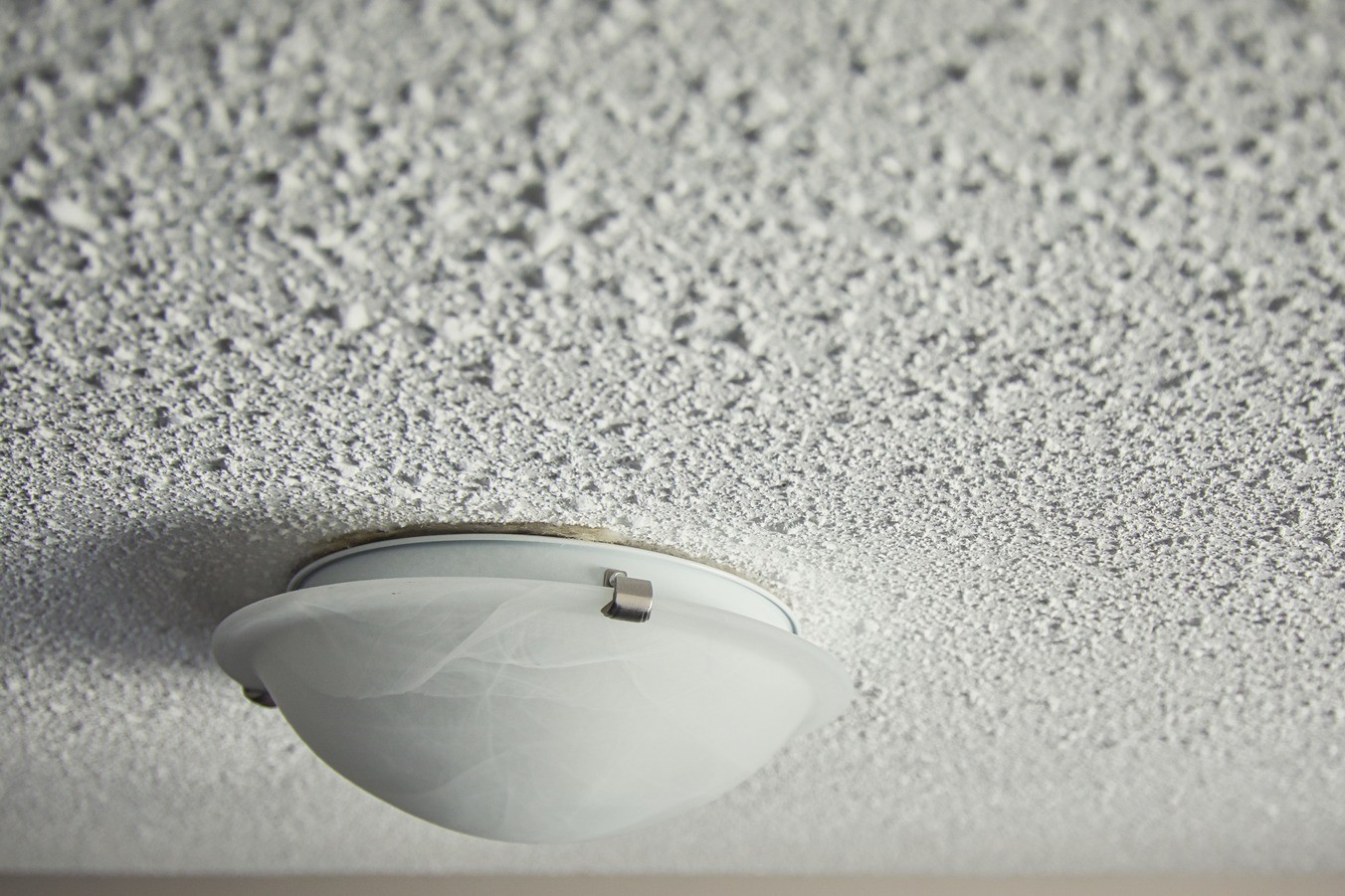Home>Home and Garden>How To Measure A Ceiling Fan


Home and Garden
How To Measure A Ceiling Fan
Published: March 4, 2024
Learn how to measure a ceiling fan for your home and garden with our easy step-by-step guide. Ensure the perfect fit for your space and enjoy optimal air circulation.
(Many of the links in this article redirect to a specific reviewed product. Your purchase of these products through affiliate links helps to generate commission for Noodls.com, at no extra cost. Learn more)
Table of Contents
Introduction
Choosing the right ceiling fan for your space is crucial for maintaining comfort and enhancing the aesthetic appeal of your home. Whether you are looking to upgrade an existing fan or install a new one, understanding how to measure a ceiling fan properly is the first step in the process. By taking accurate measurements and considering various factors such as room size, ceiling height, and mounting options, you can ensure that the ceiling fan you select not only fits perfectly in the space but also provides optimal air circulation and functionality.
In this comprehensive guide, we will walk you through the step-by-step process of measuring a ceiling fan. From gathering the necessary tools to determining the ideal blade span and selecting the right size for your space, each step is essential in helping you make an informed decision. By the end of this guide, you will have the knowledge and confidence to measure a ceiling fan accurately, enabling you to choose the perfect addition to your home.
So, let's dive into the process of measuring a ceiling fan and empower you to make a well-informed decision for your home.
Read more: How To Balance A Ceiling Fan
Step 1: Gather Necessary Tools
Before you begin the process of measuring a ceiling fan, it's essential to gather the necessary tools to ensure accurate and precise measurements. Having the right tools at your disposal will streamline the process and enable you to make informed decisions when selecting the ideal ceiling fan for your space.
Here are the essential tools you will need:
-
Measuring Tape: A reliable measuring tape is a fundamental tool for accurately measuring the dimensions of the room and the ceiling height. Opt for a tape measure that is long enough to reach the highest point of the ceiling and provides clear markings for precise measurements.
-
Ladder or Step Stool: Depending on the height of your ceiling, a sturdy ladder or step stool will be necessary to access the mounting location and take measurements comfortably and safely.
-
Pen and Paper: Keeping a pen and paper handy is crucial for jotting down the measurements as you go through the process. This will help you keep track of the dimensions and refer back to them when selecting the appropriate ceiling fan.
-
Smartphone or Camera: While not essential, having a smartphone or camera can be beneficial for capturing images of the room and the ceiling, providing visual references when exploring different ceiling fan options.
By ensuring that you have these tools readily available, you will be well-prepared to embark on the process of measuring a ceiling fan accurately. With the right tools in hand, you can proceed to the next steps with confidence, knowing that you are equipped to gather the necessary measurements and make informed decisions when selecting the perfect ceiling fan for your space.
Step 2: Measure the Ceiling Height
Measuring the ceiling height is a crucial step in determining the appropriate size and mounting options for your ceiling fan. Accurate measurements ensure that the fan is positioned at an optimal distance from the floor, allowing for efficient air circulation and safe operation. To measure the ceiling height, follow these steps:
-
Locate the Highest Point: Begin by identifying the highest point of the ceiling where the fan will be installed. This is typically in the center of the room, directly above the area where you intend to position the fan. Use a ladder or step stool to access this location safely.
-
Use a Measuring Tape: With the highest point identified, extend the measuring tape from the floor to the ceiling. Ensure that the tape is held taut and straight to obtain an accurate measurement. Record the distance in feet and inches, noting it down for future reference.
-
Consider Sloped Ceilings: If your ceiling is sloped or vaulted, it's essential to measure the vertical distance from the floor to the point where the ceiling is at its lowest. This measurement is crucial for selecting the appropriate downrod length if a downrod is required for the ceiling fan installation.
-
Take Multiple Measurements: For added precision, take measurements at various points around the room to account for any inconsistencies in ceiling height. This is particularly important in rooms with irregular or non-standard ceiling shapes.
By measuring the ceiling height accurately, you will have the foundational information needed to determine the appropriate mounting options and ensure that the ceiling fan is positioned at an optimal distance from the floor. These measurements will guide your decision-making process as you move forward in selecting the ideal ceiling fan for your space.
Remember, precision is key when measuring the ceiling height, as it directly impacts the safety, functionality, and visual appeal of the ceiling fan once it is installed. With the ceiling height measurements in hand, you are ready to proceed to the next steps in the process of measuring a ceiling fan effectively.
Step 3: Measure the Room Size
Measuring the room size is a critical aspect of determining the appropriate ceiling fan dimensions and airflow coverage. By accurately assessing the dimensions of the room, you can ensure that the selected ceiling fan provides optimal air circulation and effectively cools or ventilates the space. Here's how to measure the room size effectively:
-
Length and Width: Begin by using your measuring tape to determine the length and width of the room. Start at one corner and measure the length of one wall, noting down the measurement. Then, measure the width from the same starting point to the opposite wall. Record both measurements in feet and inches for precision.
-
Ceiling Shape: Take note of any architectural features or irregularities in the ceiling shape, such as alcoves, angled walls, or open floor plans. These elements can impact the airflow and distribution of the ceiling fan, influencing the size and style that would best suit the space.
-
Consider Room Functionality: Assess how the room is utilized to gauge the airflow requirements. For instance, kitchens and living rooms may benefit from larger ceiling fans with robust airflow, while smaller fans may suffice for bedrooms or home offices.
-
Account for Room Size: The size of the room directly influences the blade span and motor power needed for the ceiling fan. Larger rooms typically require fans with a greater blade span and higher airflow capacity to effectively circulate air, while smaller rooms may be adequately served by compact ceiling fans.
-
Visualize Fan Placement: Visualize where the ceiling fan will be positioned within the room, considering factors such as furniture layout, lighting fixtures, and potential obstructions. This visualization aids in determining the ideal fan size and ensures that it complements the overall aesthetics of the space.
By meticulously measuring the room size and considering its unique characteristics, you can make informed decisions when selecting a ceiling fan that aligns with the specific requirements of the space. These measurements serve as a foundational guide in choosing a fan that not only enhances comfort but also harmonizes with the room's design and functionality. With the room size accurately assessed, you are well-equipped to proceed to the subsequent steps in the process of measuring a ceiling fan effectively.
Step 4: Determine the Blade Span
The blade span of a ceiling fan plays a pivotal role in its performance and effectiveness in circulating air within a room. Determining the appropriate blade span involves considering the room size, ceiling height, and the desired airflow coverage. By selecting the right blade span, you can ensure that the ceiling fan operates optimally, providing comfort and ventilation while complementing the aesthetics of the space.
Read more: How To Measure A Door
Factors to Consider:
Room Size and Shape
The dimensions of the room directly influence the ideal blade span for a ceiling fan. As a general guideline, larger rooms require fans with a greater blade span to effectively circulate air. For rooms with standard dimensions, such as 12' x 12' or 14' x 16', a blade span of 52 to 56 inches is typically suitable. However, for expansive spaces exceeding 400 square feet, larger blade spans of 60 inches or more may be necessary to achieve adequate airflow coverage.
Additionally, the shape of the room, including any alcoves or irregularities, should be taken into account when determining the blade span. Rooms with unique architectural features may benefit from customized fan sizes to ensure uniform air distribution.
Ceiling Height
The ceiling height is a crucial factor in selecting the appropriate blade span for a ceiling fan. Rooms with standard ceiling heights of 8 to 9 feet can accommodate most fan sizes, providing flexibility in blade span selection. However, for rooms with higher ceilings, such as those exceeding 9 feet, it is advisable to opt for fans with longer downrods and larger blade spans to effectively circulate air at an optimal height.
Conversely, spaces with lower ceilings, such as basements or rooms with 7-foot ceilings, require fans with shorter downrods and compact blade spans to prevent the fan from hanging too low and compromising safety.
Airflow Efficiency
The blade span directly influences the airflow efficiency of a ceiling fan. Larger blade spans are designed to move more air, making them suitable for rooms where robust air circulation is desired. However, it is essential to strike a balance, as excessively large blade spans in smaller rooms can create discomfort due to excessive airflow and noise.
Visual Harmony
Beyond functionality, the blade span contributes to the visual appeal of the ceiling fan within the room. A well-proportioned fan size enhances the overall aesthetics, creating a balanced and harmonious look. When selecting the blade span, consider how it complements the room's design, furniture layout, and existing décor, ensuring that the fan becomes an integral part of the space's visual appeal.
By carefully considering these factors, you can determine the ideal blade span for your ceiling fan, ensuring that it aligns with the specific requirements of the room while enhancing comfort and style. With the blade span determined, you are ready to proceed to the next steps in the process of measuring a ceiling fan effectively.
Step 5: Consider the Mounting Options
When it comes to installing a ceiling fan, the mounting method plays a crucial role in ensuring stability, safety, and optimal performance. Considering the mounting options is essential for determining the most suitable installation approach based on the ceiling height, room layout, and aesthetic preferences. By exploring the various mounting options available, you can make an informed decision that aligns with the specific requirements of your space.
Types of Mounting Options
Standard Mount
The standard mount, also known as a flush mount or close-to-ceiling mount, involves attaching the fan directly to the ceiling without the use of a downrod. This mounting option is ideal for rooms with lower ceilings, typically 8 feet or less, where maintaining sufficient clearance is essential. By positioning the fan closer to the ceiling, the standard mount ensures safe operation and minimizes the risk of contact with occupants or furnishings.
Angled Mount
For rooms with sloped or vaulted ceilings, an angled mount, facilitated by a specialized ceiling fan canopy, allows the fan to be installed on an incline. This mounting option accommodates the ceiling's slope, ensuring that the fan hangs perpendicular to the floor for optimal airflow distribution. By utilizing an angled mount, you can effectively address the architectural features of the room while ensuring that the fan operates at an ideal angle for maximum performance.
Downrod Mount
Rooms with higher ceilings benefit from a downrod mount, which involves suspending the fan from a downrod to achieve an appropriate distance from the ceiling. The length of the downrod can be customized based on the ceiling height, allowing for precise positioning of the fan to optimize air circulation. Additionally, downrod mounts contribute to a visually striking aesthetic, particularly in spaces with lofty ceilings, creating a sense of grandeur and elegance.
Read more: How To Measure Chest Size
Considerations for Mounting Options
Ceiling Height
The ceiling height directly influences the choice of mounting options. Rooms with standard or lower ceilings are well-suited for standard mounts, while taller ceilings necessitate the use of downrods to position the fan at an optimal height. Understanding the ceiling height is essential for selecting the most appropriate mounting option that ensures both functionality and visual appeal.
Aesthetic Impact
The chosen mounting option contributes to the overall aesthetic impact of the ceiling fan within the room. By considering the visual harmony and design cohesiveness, you can select a mounting method that complements the room's style and architectural elements. Whether aiming for a streamlined, modern look with a standard mount or an impressive, dramatic effect with a downrod mount, the mounting option significantly influences the fan's visual presence.
Airflow Efficiency
Different mounting options can impact the airflow efficiency of the ceiling fan. Proper positioning, facilitated by the chosen mount, ensures that the fan operates optimally, effectively circulating air throughout the room. By aligning the mounting option with the room's airflow requirements, you can enhance comfort and ventilation while maintaining energy efficiency.
By carefully considering the mounting options and their respective implications, you can make an informed decision that optimizes the installation of the ceiling fan. Whether prioritizing safety, aesthetics, or airflow efficiency, the chosen mounting option plays a pivotal role in the overall performance and visual impact of the fan within the space. With the mounting options thoroughly evaluated, you are well-prepared to proceed with the next steps in the process of measuring a ceiling fan effectively.
Step 6: Choose the Right Size for Your Space
Selecting the right size for your ceiling fan is a pivotal decision that directly impacts its functionality, visual appeal, and overall effectiveness in providing comfort. By carefully assessing the specific requirements of your space and considering factors such as room size, ceiling height, and airflow coverage, you can make an informed choice that enhances the ambiance and livability of your home.
Room Size and Blade Span
The room size serves as a primary determinant in choosing the appropriate ceiling fan size. For smaller rooms, such as bedrooms or compact living spaces, fans with a blade span ranging from 44 to 50 inches are typically suitable. These sizes ensure adequate airflow coverage without overwhelming the space. Conversely, larger rooms, such as expansive living areas or great rooms, benefit from ceiling fans with a blade span of 52 inches or more. By selecting a fan size that aligns with the room's dimensions, you can optimize air circulation and create a comfortable environment for occupants.
Ceiling Height and Proportion
In addition to room size, the ceiling height plays a crucial role in determining the right fan size for your space. Rooms with standard ceiling heights can accommodate a variety of fan sizes, providing flexibility in selection. However, for rooms with higher ceilings, it is essential to consider proportionality and visual impact. Taller ceilings often benefit from larger fans with extended downrods, creating a sense of balance and proportion within the space. Conversely, rooms with lower ceilings require fans with compact blade spans to maintain appropriate clearance and visual harmony.
Read more: How To Measure Wrist Size
Aesthetic Considerations
Beyond functionality, the size of the ceiling fan contributes to the overall aesthetics of the room. By choosing a size that complements the existing décor, furniture layout, and architectural features, you can integrate the fan seamlessly into the space. Consider the visual impact of the fan size, ensuring that it enhances the room's ambiance and serves as a stylish focal point. Whether aiming for a subtle, understated presence or a bold, statement-making addition, the chosen fan size significantly influences the room's visual appeal.
Customization and Personalization
In some cases, customizing the fan size to suit the unique characteristics of the room may be necessary. Irregular room shapes, architectural features, or specific airflow requirements may call for tailored fan sizes to ensure optimal performance. By exploring customization options, such as blade span variations and specialized designs, you can address the specific needs of your space, creating a personalized solution that enhances both functionality and style.
By carefully considering these factors and evaluating the unique attributes of your space, you can confidently choose the right size for your ceiling fan. Whether prioritizing airflow efficiency, visual harmony, or personalized customization, the selected fan size will serve as a defining element in creating a comfortable, inviting, and aesthetically pleasing environment within your home.
Conclusion
In conclusion, mastering the art of measuring a ceiling fan is a fundamental step in the process of selecting the perfect addition to your home. By following the comprehensive steps outlined in this guide, you have gained the knowledge and confidence to make informed decisions that align with the specific requirements of your space. From gathering the necessary tools to meticulously measuring the ceiling height, room size, and considering the blade span and mounting options, each aspect contributes to the overall success of your ceiling fan selection.
The process of measuring a ceiling fan goes beyond mere dimensions; it encapsulates the essence of creating a comfortable, visually appealing, and functional living environment. By understanding the interplay between room size, ceiling height, and airflow requirements, you can tailor your ceiling fan selection to suit the unique characteristics of your space. Whether aiming for optimal air circulation, striking visual impact, or seamless integration with the room's design, the measurements you have taken serve as the foundation for a well-informed decision.
As you embark on the journey of selecting a ceiling fan, remember that precision and attention to detail are paramount. The measurements you have gathered will guide you in choosing a fan that not only enhances comfort but also harmonizes with the aesthetics of your home. Whether it's a compact fan for a cozy bedroom or a grand, statement-making piece for a spacious living area, the measurements you have taken pave the way for a tailored, personalized solution.
Furthermore, the considerations you have explored, such as blade span, mounting options, and visual harmony, empower you to make choices that go beyond mere functionality. Your ceiling fan becomes an integral part of your home, contributing to the ambiance, comfort, and style of the space. By carefully evaluating these factors, you ensure that the fan you select becomes a seamless and impactful addition to your living environment.
In essence, the process of measuring a ceiling fan is a journey of transformation, where precise dimensions and thoughtful considerations culminate in the selection of a fan that not only meets your practical needs but also elevates the overall appeal of your home. Armed with the knowledge and insights gained from this guide, you are well-equipped to embark on this journey with confidence, knowing that the perfect ceiling fan awaits to enhance your living space in both form and function.












